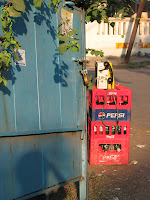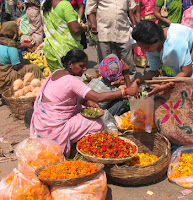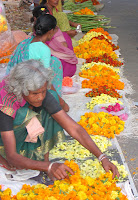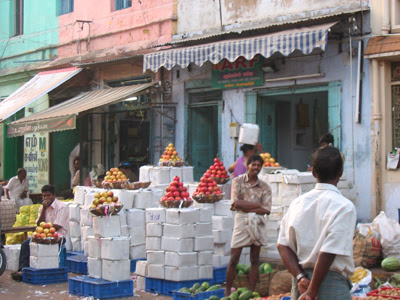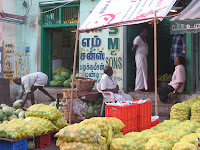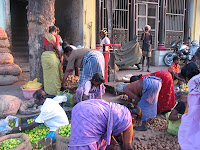 This blog has been writing about and photographing bazaars. So, many of the posts are about experiences in the bazaars in Kerala, in Chennai and in Vizag. Its at the moment just fascinated with this part of our living heritage.
This blog has been writing about and photographing bazaars. So, many of the posts are about experiences in the bazaars in Kerala, in Chennai and in Vizag. Its at the moment just fascinated with this part of our living heritage.In the month of April, the blog has focused on how in India, Art is a way of life and that one does see this in our Bazaars everyday. In this april section and also in a few posts in the end of March, bazaars were seen not only as spaces for everyday but as creations of the people to whom they belong to. Art is seen for a while not as a "representation" of the real world but as a "way of seeing" that is photographed for that moment in time. The creation continues to be where it always was.
In May 2007, the blog will go back to the bazaars as a spatial experience, since this research must go on. There are for now, thoughts that belong to the bazaar, which are here at INDIAN BAZAARS and those that belong to experiencing architecture, experiencing life which are in the blog a way of seeing








